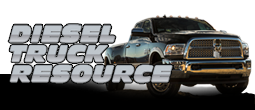
 |
Coolant Type And Capacity For Cummins 6.7L
Does anyone know the capacity and the type of coolant I need to use for my 2007.5 6.7L Cummins? I searched but could not find the type.
Thanks in advance. |
Not completely sure of the type, but the only place anywhere near me was the dealer. I know that when Replaced a bad hose, it took me 2 gallons to get the mixture correct. That was only draining the radiator. I DO know, don't mix it. If you do, kinda turns to jelly. Saw a radiator at the dealer that was ruined by doing that.
|
I just did the water pump on mine and I think I used about 3 gallons. Capacity is around 4 I believe. Go get the Zerex G05 HOAT and use that. It is almost clear and the only difference with this and the factory coolant is the dye.
|
I found this. Do I mix 50/50 with distilled water? Cause I see they have 2 versions, one with 50/50 and one without.
I see that it is approved by cummins http://www.valvoline.com/pdf/zerex_g05.pdf When diluted 50% with water, Zerex G 05 protects modern engine components from winter freezing and summer boil over. The chart at the top right provides mixing information. A 50% to 70% concentration range is suggested for optimum corrosion protection. ZerexÒ G 05 is compatible with better brands of coolant commonly available. It contains a high quality defoamer system and will not harm hoses, plastics or original vehicle finishes. |
In case anyone else is wondering you must mix 50/50 (depending on conditions)
CAUTION: Use of Propylene Glycol based coolants is not recommended, as they provide less freeze protection and less corrosion protection. The cooling system is designed around the coolant. The coolant must accept heat from engine metal, in the cylinder head area near the exhaust valves and engine block. Then coolant carries the heat to the radiator where the tube/fin radiator can transfer the heat to the air. The use of aluminum cylinder blocks, cylinder heads, and water pumps requires special corrosion protection. Mopar® Antifreeze/Coolant, 5 Year/160,000 km (100,000 Mile) Formula (MS-9769), or the equivalent ethylene glycol base coolant with organic corrosion inhibitors (called HOAT, for Hybrid Organic Additive Technology) is recommended. This coolant offers the best engine cooling without corrosion when mixed with 50% Ethylene Glycol and 50% distilled water to obtain a freeze point of -37°C (-35°F). If it loses color or becomes contaminated, drain, flush, and replace with fresh properly mixed coolant solution. CAUTION: Do not use coolant additives that are claimed to improve engine cooling. CAUTION: Mopar® Antifreeze/Coolant, 5 Year/100,000 Mile Formula (MS-9769) may not be mixed with any other type of antifreeze. Mixing of coolants other than specified non-HOAT or other HOAT coolant, may result in engine damage that may not be covered under the new vehicle warranty, and decreased corrosion protection. COOLANT PERFORMANCE The required ethylene-glycol (antifreeze) and distilled water mixture depends upon climate and vehicle operating conditions. The coolant performance of various mixtures follows: Pure Distilled Water - Distilled water can absorb more heat than a mixture of water and ethylene-glycol. This is for purpose of heat transfer only. Water also freezes at a higher temperature and allows corrosion. 100 percent Ethylene-Glycol - The corrosion inhibiting additives in ethylene-glycol need the presence of distilled water to dissolve. Without water, additives form deposits in system. These act as insulation causing temperature to rise to as high as 149°C (300°F). This temperature is hot enough to melt plastic and soften solder. The increased temperature can result in engine detonation. In addition, 100 percent ethylene-glycol freezes at -22°C (-8°F). 50/50 Ethylene-Glycol and Distilled Water - Is the recommended mixture, it provides protection against freezing to -37°C (-34°F). The antifreeze concentration must always be a minimum of 44 percent, year-round in all climates. If percentage is lower, engine parts may be eroded by cavitation. Maximum protection against freezing is provided with a 68 percent antifreeze concentration, which prevents freezing down to -67.7°C (-90°F). A higher percentage will freeze at a warmer temperature. Also, a higher percentage of antifreeze can cause the engine to overheat because specific heat of antifreeze is lower than that of water. CAUTION: Richer antifreeze mixtures cannot be measured with normal field equipment and can cause problems associated with 100% ethylene-glycol. |
coolant type
dumb question. dealer says cant mix then how can prestone advertise mixes with any coolant?
|
As long as you are using the correct base coolant chemistry (HOAT) in this case then there is no issue. The only difference is the color which is a dye that different manufacturers specify so as to differntiate and confuse/scare people into buying their over priced products. Yes, there should be a 50/50 mix with distilled water. When they say can't mix, then mean with other designed coolant chemistry.
|
| All times are GMT -5. The time now is 11:47 AM. |
© 2024 MH Sub I, LLC dba Internet Brands